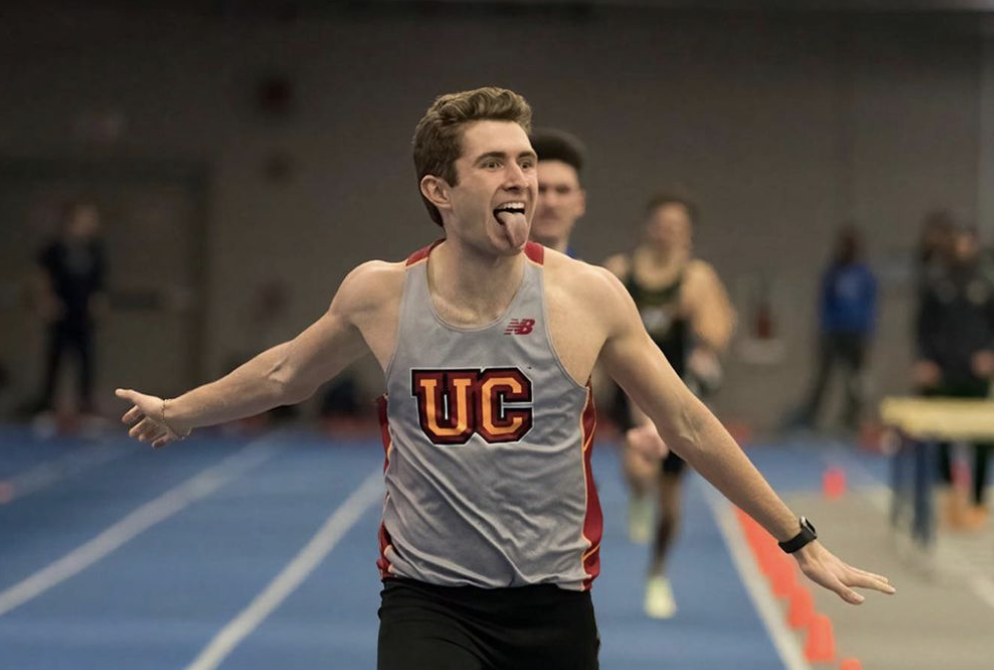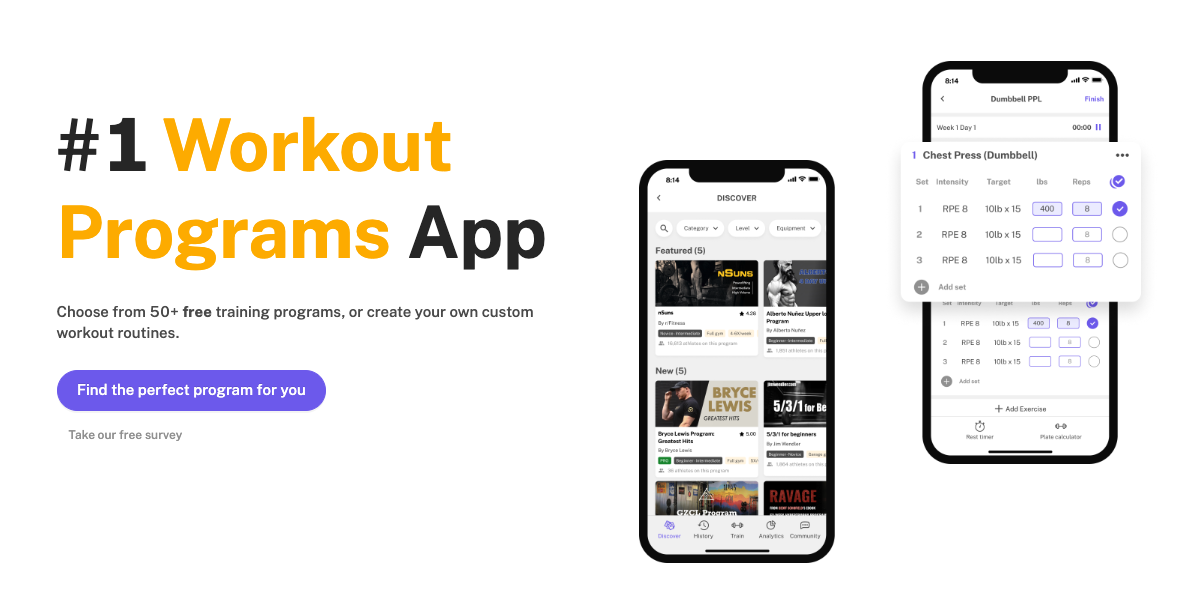How to Improve Strength and Power for Your Running and Jumping Speed in Track and Field
Written by the Boostcamp staff
Enhance your athletic skills
In track and field, the key to excelling in events like sprints, hurdles, long jumps, and high jumps lies in the perfect blend of strength and power. While speed and technique are crucial, athletes who focus on building strength and power can achieve explosive starts, maintain high velocity, and leap further or higher. Now you do not need to train like a powerlifter or bodybuilder to be good in track and field, but there are some key components of crafting a good workout routine when it comes to excelling in these sports.
This article will guide you on how to improve your strength and power specifically for running and jumping events in track and field, and it will introduce a tailored program designed to help you reach your peak performance.
Understanding Strength and Power in Track and Field

Before diving into training methods, it’s essential to understand the roles of strength and power in track and field:
Strength refers to the ability of your muscles to exert force. In track and field, this means having the muscle endurance to sustain speed and maintain form over the course of a race or the ability to propel yourself off the ground with force in jumping events.
Power is the ability to exert force quickly. It’s the combination of strength and speed that results in explosive movements like starting out of the blocks or pushing off during a jump.
Both elements are critical for runners and jumpers. Improving strength helps with maintaining speed and stability, while enhancing power contributes to quick, explosive movements that can shave seconds off your time or add inches to your jump.
Effective Training Strategies for Strength and Power
To improve your strength and power, your training should focus on exercises that build muscle strength, improve explosive power, and enhance overall athletic performance. Here’s how to structure your training:
1. Incorporate Compound Movements
Compound exercises like squats, deadlifts, lunges, and bench presses engage multiple muscle groups simultaneously, which is crucial for building overall strength. For runners and jumpers, squats and deadlifts are particularly beneficial as they target the quads, hamstrings, and glutes—key muscles used in sprinting and jumping.
Squats: Help build leg strength, which is critical for both acceleration and maintaining top speed.
Deadlifts: Improve posterior chain strength, including the hamstrings and glutes, essential for powerful strides and jumps.
2. Focus on Explosive Power with Plyometrics
Plyometric exercises are dynamic movements that increase power by training your muscles to exert maximum force in short intervals. These exercises mimic the explosive nature of sprinting and jumping.
Box Jumps: Great for building explosive power in the legs. The focus is on quick, powerful movements.
Bounding: Mimics the motion of running with an exaggerated focus on the push-off phase, improving stride length and power.
Depth Jumps: Train your muscles to react quickly and powerfully, helping with explosive takeoffs in jumping events.
3. Include Olympic Lifts
Olympic lifts like cleans and snatches are excellent for developing power. These lifts require a combination of strength, speed, and coordination, making them perfect for athletes looking to improve their performance in explosive movements.
Power Cleans: Focus on explosive power from the hips, a critical area for sprinters and jumpers.
Snatches: Engage the entire body in a powerful, quick movement, enhancing overall athleticism and power.
4. Don’t Neglect Core Strength
A strong core is vital for stability and power transfer in both running and jumping. Exercises like planks, Russian twists, and leg raises should be a regular part of your routine.
Planks: Build core endurance and stability, crucial for maintaining form.
Russian Twists: Improve rotational strength, helping with balance and stability during dynamic movements.
5. Recovery and Mobility
Building strength and power can be taxing on the body, so it’s essential to prioritize recovery and maintain flexibility. Incorporate mobility exercises and stretching into your routine to ensure your muscles recover properly and you maintain a full range of motion.
Foam Rolling: Helps reduce muscle soreness and improve circulation, aiding recovery.
Dynamic Stretching: Enhances flexibility and prepares muscles for explosive movements.
Introducing the Strength/Power Program for Track and Field Running and Jumping Speed
To help you effectively apply these principles, the Strength/Power Program for Track and Field Running and Jumping Speed is an excellent option. This program is designed by Boostcamp user, Simeon, with a primary emphasis on strength and a secondary focus on power, tailored specifically for track and field athletes. Here’s what you can expect from the program:
Program Overview
Training Frequency: 5 days a week
Primary Focus: Strength development
Secondary Focus: Power enhancement
Equipment Needed: Barbell, dumbbell, band, and calisthenic equipment
Program Details
Primary Strength Emphasis: The program includes compound movements like squats, deadlifts, and lunges to build a solid strength foundation. These exercises are critical for improving your ability to maintain speed and exert force during running and jumping events.
Secondary Power Emphasis: Plyometric exercises, Olympic lifts, and explosive movements are incorporated to ensure you develop the necessary power for quick starts, rapid acceleration, and explosive jumps.
Flexibility in Training: On the fifth day, you have the option to focus on cleans and glute exercises or replace it with another leg day. This flexibility allows you to tailor the program to your specific needs and ensure you’re targeting your weaknesses.
Inspired by Proven Methods: The program takes inspiration from other successful training regimens, blending them into a comprehensive approach that is not only effective but also adaptable for various athletes.
Why This Program Works
Holistic Development: By focusing on both strength and power, this program ensures you develop the essential qualities needed for track and field success.
Efficient Use of Equipment: With minimal equipment required, the program is accessible and can be performed in most gym settings or even at home with basic gear.
Customizable: The ability to swap out exercises or focus on specific muscle groups means the program can be adjusted to fit your individual needs and goals.
Conclusion
Improving strength and power is crucial for any track and field athlete looking to enhance their running and jumping performance. By incorporating compound movements, plyometrics, Olympic lifts, and core exercises, you can build the strength and explosive power necessary to excel in your events. The Strength/Power Program for Track and Field Running and Jumping Speed offers a structured, effective approach to help you achieve these goals. With a primary focus on strength and a secondary emphasis on power, this program is designed to elevate your performance and help you reach new heights in your track and field career.
Boostcamp has plenty of free programs that help with both strength and hypertrophy, be sure to check them out and follow Boostcamp on Instagram and subscribe on YouTube!


